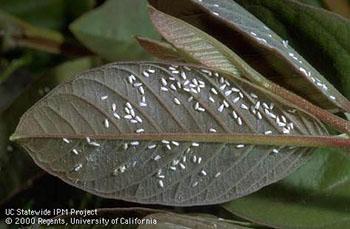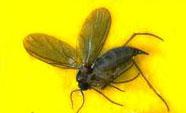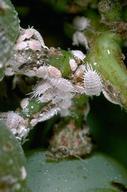Summer 2022
Container Gardening Pests

- They tend to be isolated on a patio or a deck
- They are generally more accessible and visited more frequently by us, so we can spot a pest issue before it becomes a huge problem
- The container walls reduce crawling pest invasions
But our Contra Costa container growing guru, Terry Lippert says, “Just about any insect pest that is a problem for plants grown in-ground can also attack container grown plants—flying insects in particular. I’ve had fewer crawling insects (e.g. sow bugs, earwigs, snails and slugs) in my containers, as compared to in-ground beds. It helps to have tall containers!”
Your container or patio garden is often more humid and sometimes protected from drying winds. Pests love a humid environment. Flying insects are just as prevalent in containers as in the garden. Ants can also bring in aphids that they then “farm” for sticky nectar. Plus, your plants may have already been infected when you bought them at the local garden center. Here is an abbreviated list of bugs for which you should be on the lookout:

http://ipm.ucanr.edu/PMG/PESTNOTES/pn7448.html
• Mealybugs- These cottony white pests suck out vital juices from your plants.
http://ipm.ucanr.edu/PMG/PESTNOTES/pn74174.html
• Scale- Usually dark or black in color and cling to stems where they suck juices.
http://ipm.ucanr.edu/PMG/PESTNOTES/pn7408.html
• White fly- Numbers can quickly build up. Look on the undersides of leaves.
http://ipm.ucanr.edu/PMG/PESTNOTES/pn7401.html
• Spider mites- Bright red and the largest mite can be seen running around on leaves.
http://ipm.ucanr.edu/PMG/PESTNOTES/pn7405.html
• Ants (and aphids)- The combination can deform leaves and introduce other problems.
http://ipm.ucanr.edu/PMG/PESTNOTES/pn7411.html and http://ipm.ucanr.edu/PMG/PESTNOTES/pn7404.html
Once they become established, pests can be difficult to control. How can you minimize this long list of critters in the first place? Practice good gardening hygiene! Wash out your empty containers with soap and warm water. Use a fresh bag of potting mix instead of your own garden soil and use fresh gloves and clean tools. Thoroughly check your new plants for signs of bugs or infestation before planting them in your container. Recycle your previously used potting mix into your garden and not back into a new container as it may contain harmful fungus, bacteria, or insect eggs.

For further information online, search for “UCANR container gardening”.
Article by David George, UC Master Gardener of Contra Costa County
Images courtesy of UC ANR
